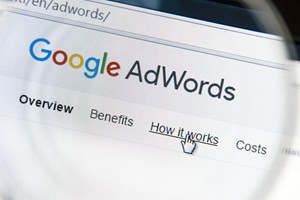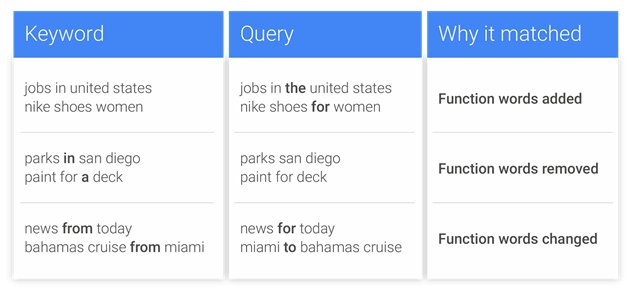Consider, for instance, this example from Google: The next biggest change this year was the decision to start automatically adding call extensions to AdWords ads—a move by Google to continue to build value in its AdWords product by giving customers insight into phone calls. The new call extensions will automatically be added to ads that don't have call extensions. Well, we're still not sure, but per that announcement, and the one about Google's pulling in GMB numbers to ads to replace call extensions, it's likely most ads will end up having a phone number if there is one featured on the page at all. IF Functions in AdWords Ads Announced in January of this year, IF functions provide the same amount of functionality advertisers previously had with ad customizers, but without the feed via spreadsheet. In that case, using an IF Function could provide tremendous value: With the exact match keyword change, a lot of advertisers without a robust keyword list will see an increase in search volume. With Google's change to call extensions, we should continue to remember that phone calls are a valuable KPI for most businesses. Even e-commerce and SaaS companies get phone calls, so it's important to gain insight into calls. With IF functions in ads, we should expect increased competition as ads become even more targeted toward specific audience segments. Remarketing lists for search (RLSA) has been out for a long time, but not all advertisers are taking advantage of audience segmentation to change both their bids and their ad copy. CallRail provides lead tracking and call analytics tools for more than 50,000 businesses across the US and Canada.


In the first article of this two-part series, we covered some important recent changes to Google’s search algorithms. The goal of this second article is to give digital marketers an idea of how the most significant changes in Google’s paid products will affect your strategy in 2017 and beyond.
Exact Match Keyword Change for Paid Search
Heralded as the destruction of exact match keywords and everything we hold dear, the most recent exact match keyword update updates the definition of exact match close variants, potentially matching keywords to a far wider host of queries.
Essentially, Google is expanding the definition to make sure search advertisers don’t have to have every variant of a keyword in their account in order to serve ads for all qualified searches.
For example, to serve for the query [nike shoes for women], we’d need to have the word “for” included in our exact match keyword. Since the search intent behind both [nike shoes for women] and [nike shoes women] is the same, Google wants to make sure you’re serving for both of the searches.

Google does clarify: It’ll still be attempting to match for the most accurate keyword. So, if you do have both terms in your account, everything is business as usual: Your longer-tail variant will still have a higher AdRank, and that will be the keyword matched to. For anyone relying on broader keywords, however, or if the adding of function words (like “for”) would change the intent of searches for your product, be sure to add these function words (for, the, from, to, etc.) as negatives to the applicable ad groups/campaigns.
Exact match keywords will also start matching to queries in which the search terms have been reordered. Consider, for instance, this example from Google:

The next biggest change this year was the decision to start automatically adding call extensions to AdWords ads—a move by Google to continue to build value in its AdWords product by giving customers insight into phone calls.
The call tracking/analytics space has undergone so much growth precisely because consumers and Google are realizing there’s an incredible amount of value to be had from calls.
Gone are the days in which pay-per-click (PPC) advertising is viable only for e-commerce or SaaS businesses. Home services and retail receive lots of phone calls, and for PPC agencies and in-house managers to prove value (especially to those clients with smaller budgets), calls are quickly becoming a primary key performance indicator (KPI).
The new call extensions will automatically be added to ads that don’t have call extensions. Where will they get the phone numbers, you ask? Google stated that it’ll be pulling phone numbers “prominently” featured on landing pages. How “prominent” does a phone number have to be? Well, we’re still not sure, but per that announcement, and the one about Google’s pulling in GMB numbers to ads to replace call extensions, it’s likely most ads will end up having a phone number if there is one featured on the page at all.
The important point to note here, however, is that regardless of the number pulled in you can still override the automated call extension with extensions you set up yourself.
Clearly, then, the update…

COMMENTS